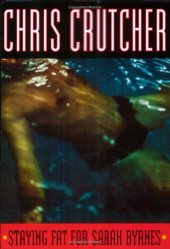Many literacy experts are studying the multi-modal literacies of young adults these days. In other words, adolescents read a much wider variety of texts than we did when I was an adolescent. Today’s young adults read not only traditional texts such as books and magazines, but they read websites, Face Book, text messages, e-mail, and instant messages. Young Adult literature has changed in form and structure to mirror these new literacies. Novels with interesting and unusual formats are being published more frequently than ever before. They are a serious departure from the chronological story told in first or third person from one character’s or a narrator’s point of view. And these formats are both intriguing to and appreciated by adolescents.
One of these new structures is the novel told from multiple perspectives. Some flip-flop back and forth between two different characters, each one with a different voice or style of story-telling. Some may tell the story from several characters. Each novel offers the reader the opportunity to observe the same events from different points of view, which from my vantage point as a high school English teacher, is a good thing for ego-centric teenagers who seem to think their perspective is the only perspective.
Another interesting format is the novel that is told through multiple types of documents. The pages look like reprinted interviews, newspaper articles, police reports, notes passed between friends, doctors’ charts, and the list goes on. Other formats include graphic novels (they look like extra-thick comic books) and novels in verse (stories told through narrative poems), but we’ll get to these a little later.
Young adult readers like these varying formats. Perhaps adolescents like them because they mimic the quick reading they do as they bounce around from website to social media to phone messages, making the reading go faster and feel more interesting. Adults are not nearly as receptive to these creative formats – we are, after all, digital immigrants as opposed to our digital native children. Books were meant to proceed in a linear fashion. But the kids love them – the novelty and creativeness hook many of the most reluctant of readers. That in itself makes them good enough for me.
Some books in alternate format to consider:
Beauty Queens by Libba Bray (2011)
Fifty teen-age beauty contestants on their way to the Miss Teen Dream pageant are left stranded on a supposedly deserted island after their plane crashes. Eleven contestants survive – and they are not all what they seem. Forced to survive in the jungle without enough eye liner, the girls are plunged into the heart of utter darkness – a world without exfoliators or lotions. Will they be rescued in time?
Hilariously funny, Libba Bray profiles seven of the contestants through inclusion of “Miss Teen Dream Fun Facts Page!” and then the third-person narrator tells part of the story from each of those contestants point of view. Also included are "Commercial Breaks" and "Words from our Sponsor" which give laugh-out-loud information about "The Corporation" - the company that sponsors the Miss Teen Dream Pageant.
Bruiser by Neal Shusterman (2011)
Brewster “Bruiser” Rawlins is a big kid who keeps to himself, and he’s been voted “Most Likely To Receive the Death Penalty” by his peers. However, when Brewster starts dating Bronte, odd things begin to happen. Bronte’s cuts and sprains miraculously heal. She begins to realize that she feels peaceful and content, even when she shouldn’t. She eventually realizes that something strange is happening when she is near Bruiser, and it turns into more horrifying than she ever expected.
Told from four points of view – Brewster, Bronte, Bronte’s twin brother Tennysin, and Brewster’s young brother Cody, Bruiser is a story that will leave the reader thinking about all four characters long after the last page is turned.
Shooter by Walter Dean Myers (2004) Myers tells the story of three misfit teenagers after the shooting of Brad, a jock, has occurred at the school. Delving into the idea of bullying and where it can progress in its extremes, Shooter takes the reader into a situation that has become all-too-common since the 1966 shooting at the University of Texas, and including shootings at Columbine High School and Westside Middle School in Jonesboro, Arkansas.
The reader gets to know Leonard, the shooter, through in depth interviews with Cameron - Len's best friend, and Carla - Len's former girlfriend, as well as through newspaper clippings, and the "die-ary" of Len himself. The school psychologist, an FBI agent, a threat analysis specialist, and the town sheriff all participate in the follow-up investigation, lending interesting voices and perspectives to Carla's, Cameron's and Len's.
And finally, not necessarily one I would recommend, but a book that falls into the alternate format category:
ttyl by Lauren Myracle (2004)
Part of the "Internet Girl" series, this novel is told entirely in instant messages between and among three high school girls - Angela, Zoe, and Maddie. As the girls love, fight, and laugh through experiences during their sophomore year, we learn about their adventures through their instant messages to each other. An interesting format and one that attracts my YA female readers. However, the young women whom I have known to read them read them strictly for the interesting format and the fun of trying to figure out some of the shorthand phrases. They have almost all made the comment that "high school girls aren't really like that."
Novels in the series include ttyl (talk to you later), ttfn (ta-ta for now), and l8r, g8r (later, gator).
Sneak Peek List 2024
3 months ago















